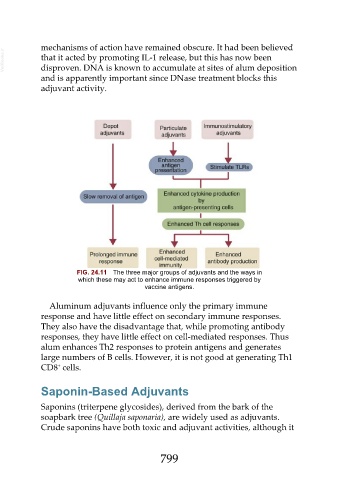Page 799 - Veterinary Immunology, 10th Edition
P. 799
mechanisms of action have remained obscure. It had been believed
VetBooks.ir that it acted by promoting IL-1 release, but this has now been
disproven. DNA is known to accumulate at sites of alum deposition
and is apparently important since DNase treatment blocks this
adjuvant activity.
FIG. 24.11 The three major groups of adjuvants and the ways in
which these may act to enhance immune responses triggered by
vaccine antigens.
Aluminum adjuvants influence only the primary immune
response and have little effect on secondary immune responses.
They also have the disadvantage that, while promoting antibody
responses, they have little effect on cell-mediated responses. Thus
alum enhances Th2 responses to protein antigens and generates
large numbers of B cells. However, it is not good at generating Th1
+
CD8 cells.
Saponin-Based Adjuvants
Saponins (triterpene glycosides), derived from the bark of the
soapbark tree (Quillaja saponaria), are widely used as adjuvants.
Crude saponins have both toxic and adjuvant activities, although it
799

